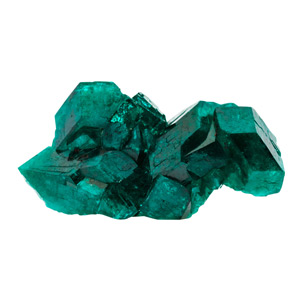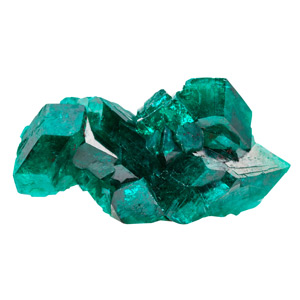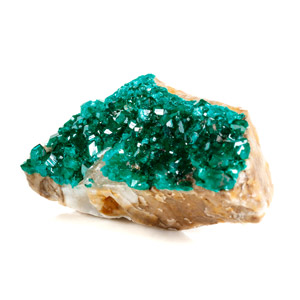dioptase
Dioptase, a captivating gemstone with its name derived from the Greek words "dia" (through) and "optima" (vision), alludes to its stunning green colour and visual allure. This rare gem is composed of copper silicate and is renowned for its vibrant emerald-like hue.
Dioptase is primarily found in desert regions with copper deposits, including Kazakhstan, Namibia, and parts of the southwestern United States. Its formation typically occurs in the oxidized zones of copper ore deposits, where it develops into exquisite green crystals.
One of Dioptase's most captivating attributes is its remarkable transparency, allowing light to create a mesmerizing play of colour within its depths. Due to its relative scarcity, Dioptase is highly sought after by gemstone collectors and jewellery enthusiasts, adding a unique and vivid touch of green to the world of gemstones.
Click on the terms in the table below to discover their meaning
Click on the terms in the table below to discover their meaning
| Name | Dioptase |
|---|---|
| Category | Cyclosilicate |
| Chemical Formula | CuSiO3 · H2O |
| IMA Symbol | Dpt |
| Crystal System | Trigonal |
| Crystal Habit | Commonly in prismatic to rhombohedral crystals; as indistinct crystalline aggregates and massive |
| Twinning | Uncommon contact twins or penetration twins |
| Cleavage | Perfect |
| Fracture | Conchoidal to uneven |
| Tenacity | Brittle |
| Hardness (Moh's Scale) |
5 |
| Specific Gravity | 3.28 - 3.15 |
| Diaphaneity | Transparent to translucent |
| Colour | Emerald-green, blue-green |
| Streak | Green |
| Lustre | Vitreous |
| Optical Class | Uniaxial (+) |
| Refractive index | nω = 1.652 - 1.658 |
| nϵ = 1.704 - 1.710 | |
| Birefringence | δ = 0.052 |
| Dispersion | Rd = 0.030 |
| Pleochroism | Weak |
| Clarity | Type III |
| Notable Varieties | Dioptase |
References
Mineralogical Society of America. (2018). Dioptase. In J. W. Anthony, R. A. Bideaux, K. W. Bladh, & M. C. Nichols (Eds.), Handbook of Mineralogy. Chantilly, VA 20151-1110, USA: Mineralogical Society of America. Retrieved from https://
The Gemology Project. (2007, January 10). Dioptase. Retrieved from The Gemology Project: http://


